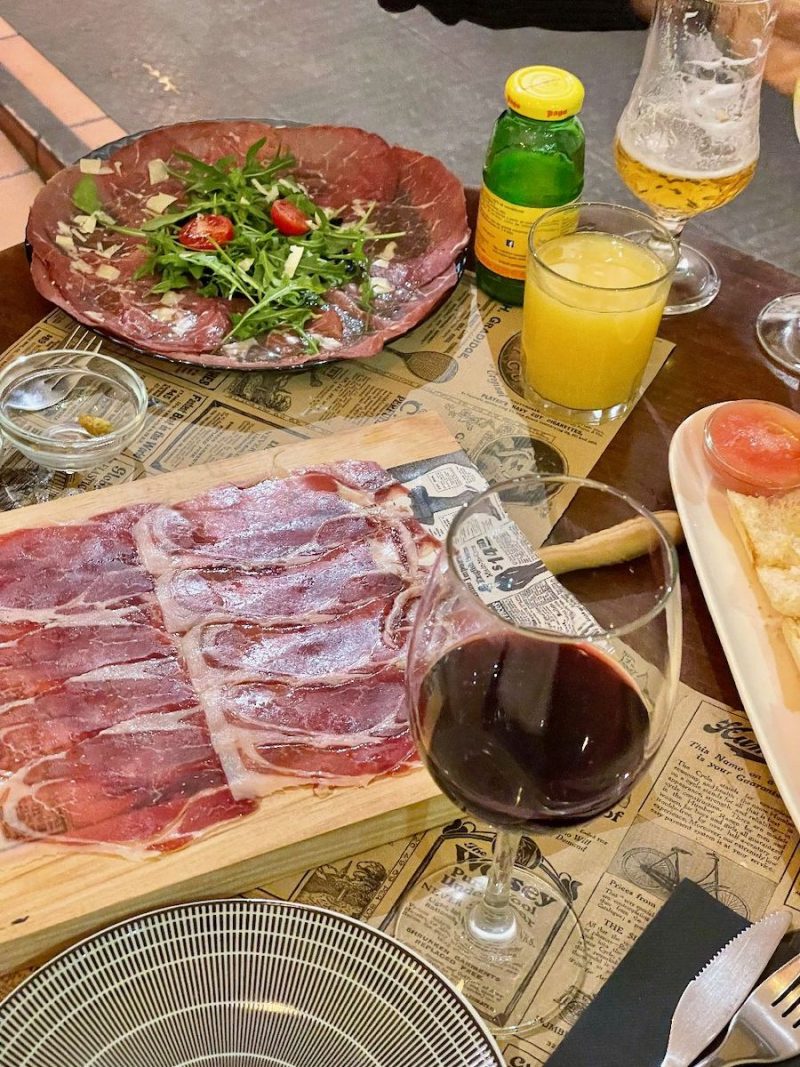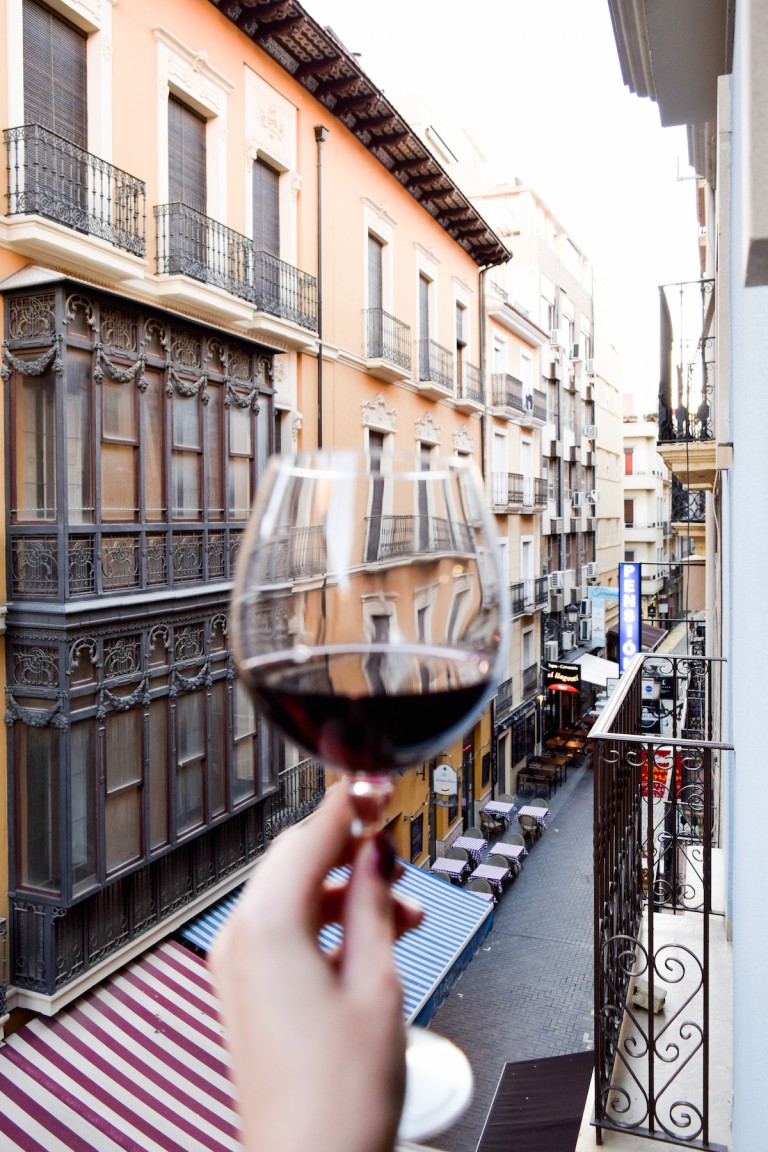Welcome to the ultimate Spain Travel Guide, to give you all the essential information you need for a trip you won’t forget! Spain, a country rich in history, culture, and natural beauty, offers something for every traveler—whether you’re an art aficionado, beach lover, or culinary explorer.
Before you pack your bags and board that plane, however, there are a few key things you should know to make the most of your Spanish sojourn. In this guide, we’ll cover everything from must-visit spots and local customs to practical tips that will help you navigate the land of flamenco, paella, and world-renowned fiestas with ease.
An Introduction To Spain
Spain is located on the Iberian Peninsula, which is part of Western Europe. It is bordered by Portugal to the west and France to the north. Spanning over one thousand miles from east to west and nine hundred miles from north to south, Spain is filled with a rich diversity of landscapes and cultures.
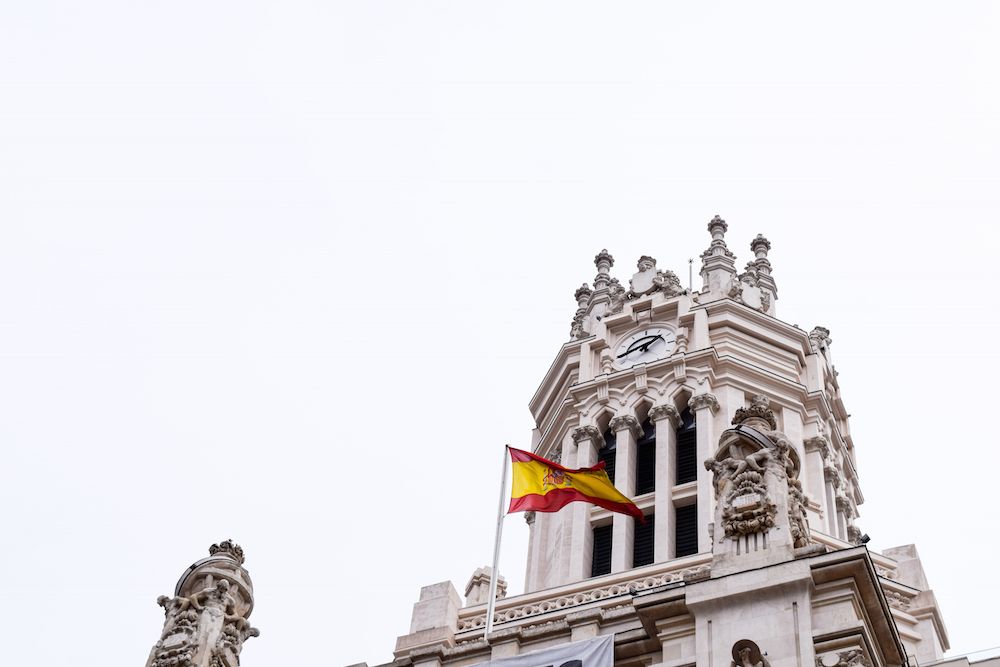
Geography: Land & Climate
The geography of Spain is diverse, ranging from the mountainous regions of the northern parts of the country to the vast plains in the southern areas.
There are four different seasons and Spain experiences each of them differently. Summer lasts from June until late September while winters last from November to March.
The climate varies throughout the different regions. For example, the Mediterranean coast experiences hot summers and mild winters, whereas the northern region is cold during the winter months. The central region has a temperate climate that is similar to the United States. The weather in the southwest is more humid than anywhere else in the country.
People
Spanish people are among the most friendly and hospitable in the world and have created a positive reputation for themselves due to the kind and friendly way they treat others. Spaniards are known for their warm hospitality and love for life. They are also very proud of their heritage and history. In my experience, most Spanish people are incredibly passionate about sharing their culture with other countries. That’s what makes visiting Spain such a joy!
Cities
There are many famous cities in Spain, such as Madrid, Barcelona, Seville, Valencia, Bilbao, Pamplona, Zaragoza, Malaga, Granada, Palma de Mallorca, Santiago de Compostela, Caceres, Santander, San Sebastian, Alicante, Cartagena, Ibiza, Toledo, A Coruna, Almeria, Las Palmas, Málaga, Murcia, Sevilla, Valladolid, Salamanca, León, Oviedo, Gijon, Pontevedra, Santa Cruz de Tenerife, Huelva, La Línea de la Concepción, Vigo, Ferrol, Lugo, Ourense, Porto, Braga, Coimbra, Badajoz, Ciudad Real, Zamora, Guadalajara and more.
Economy
Spain is considered to be a high-income economy with a per capita GDP of $32,000. Its economic growth rate is 3.2% annually. The government spends approximately 4.5% of its total budget on education. The country’s current account balance is positive. However, it still relies heavily on foreign trade.
Spanish History & Government
Spain was originally ruled by Rome, then became part of the Christian kingdom of Castile. He established the first centralized government in the country. Since then, Spain had been governed by a monarchy. Currently, there is no king or queen. Instead, the head of state is called Presidente del Reino (King President).
Spain has a complex history of governance, shaped by a myriad of influences like Roman rule, Islamic conquest, and Catholic monarchy. After the fall of the Roman Empire, various Visigothic kingdoms controlled the region until the Islamic Moors invaded in 711 AD.
Moorish rule continued in parts of Spain until 1492, when Catholic monarchs Ferdinand and Isabella completed the Reconquista, uniting Spain under Christian rule. After centuries of fighting between various kingdoms, Spain finally united under King Ferdinand II. This led to an absolute monarchy and the expansion of Spanish influence through colonialism, primarily in the Americas.
The 19th and 20th centuries were marked by political instability, featuring a series of republics, restorations of the monarchy, and even a brief First Spanish Republic. The Spanish Civil War (1936-1939) resulted in a nationalist victory and dictatorship under General Francisco Franco, lasting until his death in 1975.
Post-Franco, Spain transitioned to a parliamentary constitutional monarchy, with King Juan Carlos I playing a crucial role in the country’s democratization. Today, Spain is a member of the European Union, governed as a parliamentary democracy with a constitutional monarch serving as head of state.

Best Places to Visit in Spain
These are the most popular places to visit in Spain!
Madrid
Madrid, the capital of Spain, offers an enriching blend of historical grandeur and modern sophistication, making it a must-visit for any traveler. The city is a treasure trove of art, boasting world-class museums like the Prado, Reina Sofia, and Thyssen-Bornemisza, where visitors can marvel at works by masters such as Goya, Picasso, and Dalí.
For Spanish architecture and history, landmarks like the Royal Palace and Plaza Mayor provide a glimpse into Spain’s elaborate past. Beyond its cultural assets, Madrid also has a tasty culinary scene, with everything from traditional tapas bars to avant-garde restaurants. Whether you’re an art lover, history buff, or foodie, Madrid has something to captivate you.
Catalonia
Catalonia, an autonomous community in northeastern Spain, offers experiences that will entice all kinds of travelers. The region is home to Barcelona, a city known for its stunning Modernist architecture, epitomized by Gaudí’s Sagrada Familia and Park Güell.
The Pyrenées mountains and the beaches of Costa Brava provide excellent hiking, skiing, and water sports. Catalonia also has a rich cultural heritage, showcased through its festivals, classic Catalan cuisine, and unique traditions like the building of human towers, or “castells.” Whether you’re interested in architecture, outdoor activities, or immersing yourself in local culture, Catalonia provides a multifaceted travel experience.
Balearic Islands
For a blend of natural beauty, resounding culture, and luxurious relaxation the Balearic Islands are a perfect destination. Located in the Mediterranean Sea, this archipelago has stunning beaches with crystal-clear waters, ideal for sunbathing, swimming, and water activities.

Beyond the beaches, each island has its own unique charm: Ibiza is world-renowned for its nightlife and electronic dance music scene, while Mallorca offers picturesque landscapes and historical landmarks like the Gothic Palma Cathedral. Meanwhile, Menorca provides a more tranquil setting, known for its untouched coves and hiking trails.
Rioja
Rioja is Spain’s foremost wine region. Tour the Marqués de Riscal winery and hotel in the Rioja wine region, designed by esteemed architect Frank Gehry and offering wine tastings in a setting mixing contemporary and classic Spanish style.
Andalusia
Andalusia is a beautiful region that includes Seville, Granada, Malaga, Cordoba, and more. You will see flamenco dancers performing in the streets. One of the best times to visit Andalusia is at Christmas time when locals celebrate the holiday with parades, music, dancing, and fireworks. Play a round of golf on one of Spain’s prestigious golf courses, like the Club de Golf Valderrama in Andalusia, ranked one of the top courses in Europe.
Valencia
Valencia, located on Spain’s eastern coast, is a compelling destination for travelers who appreciate a harmonious blend of tradition and innovation. The city boasts futuristic architecture like the City of Arts and Sciences complex, which stands in stark contrast to its historic old town and Gothic cathedral.
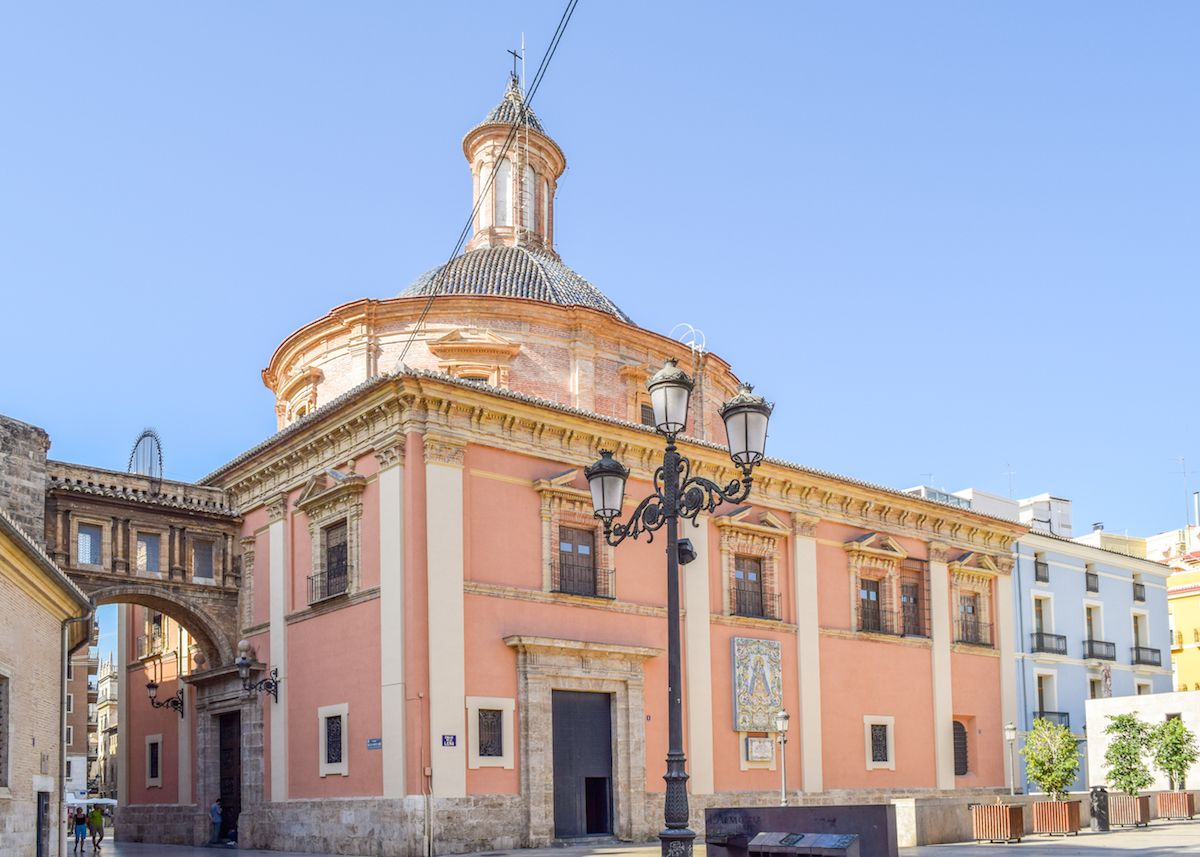
Also the birthplace of paella, Valencia’s restaurants offer the chance to sample this iconic Spanish dish. For beach lovers, the city has easy access to the Mediterranean Sea, where you can relax on the sandy shores. Some of the biggest Valencia events are the Fallas Festival and La Tomatina.
Canary Islands
The Canary Islands, an archipelago located off the northwest coast of Africa, are a haven for intense outdoor experiences. Known for its unique volcanic landscapes, people visit the Canaries for wild activities, from hiking the rugged terrains of Mount Teide on Tenerife to exploring the dunes of Gran Canaria.
The region’s subtropical climate makes it a year-round destination, perfect for beachgoers and water sports fans. The islands’ traditional Canarian cuisine, folk music, and festivals are unforgettable.
Basque Country
The Spanish Basque Country is another beautiful region in Spain. The Basque Country has a unique language called Euskara. Nestled between rugged coastlines and verdant mountains, the region is an outdoor paradise for surfing in San Sebastián and hiking in the Pyrenées. The Basque Country is renowned for its version of tapas – called pintxos – which you’ll see tourists and locals enjoying standing up at the many bars.

In Bilbao, don’t miss the chance to visit the iconic Guggenheim Bilbao Museum, which houses an impressive collection of contemporary art in a modern architecture masterpiece designed by Frank Gehry.
Spain Travel Tips
Here are a couple of general Spain travel tips to know!
Shopping
Shops are closed on Sunday. Stores are open Monday through Saturday from 9 am to 1 pm and 5 pm to 8 pm. Smaller stores may close earlier or stay open later. Large department stores are open until 10 pm.
Currency
The currency of Spain is the Euro. Make sure you sort your currency before departing.
Language
Spanish is spoken throughout the country. English is widely understood. However, if you want to get around quickly, it might be an idea to learn some Spanish phrases.
Electricity
Spain uses 220 volts AC (60 cycles) instead of North America’s 110 volts AC (50 cycles). Most hotels provide both types of sockets but you should always bring an adapter converter.
Tipping
Tips are appreciated in restaurants. Tipping is optional in bars, cafés, and other places where service is included in the price of the meal. Taxi drivers do not expect tips.
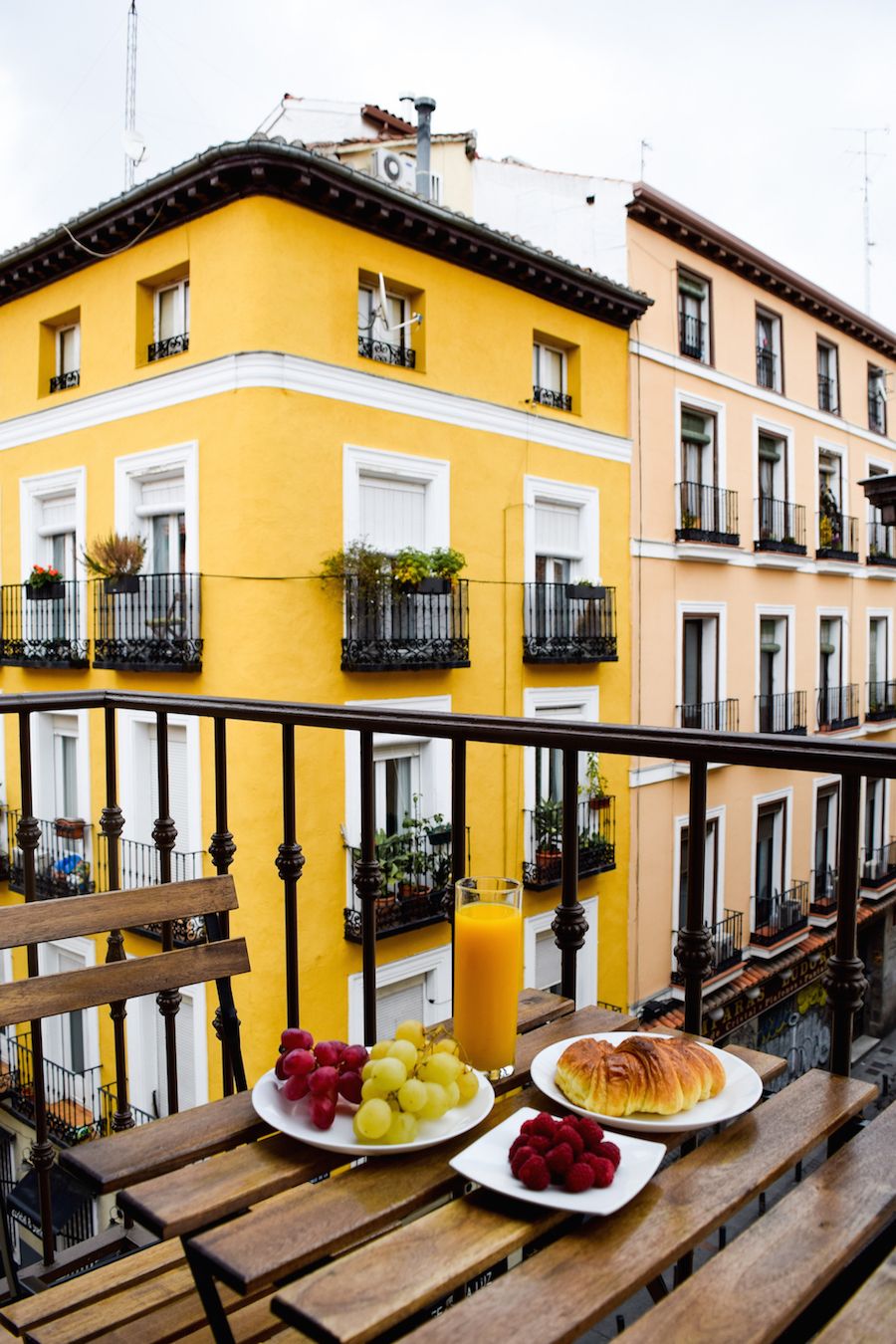
How to Visit Spain as an American
To travel to Spain as an American, the typical Schengen Area rules apply. You must have a valid US passport with at least 6 months of validity left. You may enter Spain through any of its airports: Madrid Barajas Airport, Barcelona El Prat International Airport, Malaga Airport, Alicante Airport, and others.
You can take a direct flight from almost anywhere in the United States to these cities. You will also need to show proof of a return ticket to leave Spain. If you want to stay longer than 90 days, you will need a tourist visa.
Getting Around Spain
You can get around Spain using trains, buses, taxis, rental cars, or walking. The national train system is very good throughout the country. Taxis are inexpensive and easy to find but rental cars allow you to see the countryside and visit smaller towns.
Trains
Spain’s national train network, operated primarily by Renfe (Red Nacional de los Ferrocarriles Españoles), is a robust and efficient system connecting far-flung corners of the country.
The system offers multiple types of services, ranging from high-speed lines to regional trains. The AVE (Alta Velocidad Española) is the high-speed service that links major cities like Madrid, Barcelona, and Seville at speeds of up to 310 km/h (193 mph), making it one of the fastest train networks in Europe.
For medium-distance travel, services like Avant and Alvia offer a balance between speed and affordability. Regional trains, known as Cercanías in metropolitan areas, cover shorter distances and are often used for daily commuting.
You can purchase Spanish train tickets online, through mobile apps, or at the stations.
The Renfe Spain Pass offers non-residents the ability to travel multiple times within a one-month period, providing flexibility for travel plans. It’s a comfortable and efficient way to explore the country.
Spanish trains connect many important cities such as Madrid, Valencia, Seville, Bilbao, Barcelona, Zaragoza, Pamplona, Santiago de Compostela, etc. Some of these lines also go underground. These trains can be expensive but worth the money most of the time!
Buses
Buses in Spain are cheap and convenient. Alsa is a cheap way to get around the country. Bus stops are marked, and bus drivers generally speak English. Buses often follow set routes and do not deviate from those routes.
Taxis
Taxis are relatively inexpensive. They are available 24 hours a day. There are taxi stands in most towns. Taxi rides are metered so always keep track of how much the ride costs, especially if you are on a budget.
Driving
If you rent a car, be aware that gas prices are higher here than they are back home. Gasoline is priced in liters. Expect to pay about $30 per gallon.
The roads in Spain are well maintained. However, don’t expect to see signs telling you where you are going. Roads are numbered, but there are no mile markers. Road signs are few and far between.
Be prepared to ask for directions from locals. But don’t worry, most people speak English and can help you out!
Where to Stay in Spain
Hotels
Hotels in Spain are similar to those found in the United States. Hotel prices range from budget to luxury. Accommodation rates vary depending on the season, location, and availability. During peak times, rooms can cost up to double their normal rate.
For a unique luxury experience, stay in a stunning paradore hotel, Spain’s state-owned historic luxury hotels located in castles, monasteries, and palaces around the country. Paradore properties like the Parador de Santiago de Compostela provide lavish accommodations and excellent service.
Or check into the Ritz Madrid, part of the iconic Ritz group and situated in the “Golden Triangle” of arts and culture.
Apartments
Many platforms like Airbnb, Booking.com, and local real estate agencies offer short-term rental apartments ranging from basic to luxurious. To rent an apartment, compare prices before making a reservation. The booking process usually involves paying a deposit or the full amount upfront. Once the reservation is confirmed, you’ll receive details on how to check in, either through a self-service process or by meeting the host or a property manager.
Hostels
In Spain, hostels are called “albergues.” Hostels offer dormitory-style accommodations with shared bathrooms. Albergues are specialized hostels found primarily along the pilgrimage routes in Spain, most notably the Camino de Santiago. While some albergues are operated by religious organizations or municipalities, others are privately owned, but all are generally geared toward serving the needs of pilgrims.
Most hostels have kitchens, laundry facilities, Internet access, and other amenities. Some hostels provide services like tours; they’re great for solo travelers and offer an opportunity to meet friends and like-minded travelers whom you might want to join in on an adventure with.
What to Eat in Spain
What is it like to eat in Spain? Let’s find out!
Spanish Foods
Spanish cuisine is diverse and flavorful, reflecting the country’s regional cultures and ingredients. You must discover the most iconic and popular Spanish foods and meals to try when visiting Spain!
In the morning, start your day like the Spanish do with churros y chocolate – fried sweet dough pastries served with a thick hot chocolate drink for dipping. Another classic breakfast is tostada con tomate – toasted bread rubbed with garlic and tomato, then drizzled with olive oil.

For lunch, be sure to try Spain’s famous tapas – bite-sized plates enjoyed as an appetizer or full meal. Classic tapas dishes include patatas bravas (fried potatoes with spicy tomato sauce), tortilla Española (Spanish omelet with potatoes and onions), gambas al ajillo (garlic shrimp), and pulpo a la gallega (Spanish octopus).
The Spanish take lunch as their main meal, and many restaurants offer a daily lunch special called menú del día. This three-course set menu is an affordable way to enjoy starters, a main dish, and dessert.
For dinner, popular dishes are cocido (meat and vegetable soup), fideuà (seafood noodle paella), and pisto (Spanish ratatouille). Other beloved meals are fabada asturiana (Asturian bean stew) and pollo al ajillo (garlic chicken).
No trip to Spain is complete without eating paella, the iconic rice dish loaded with saffron, seafood, meat, and vegetables.
Next, enjoy some Spanish cheese. Spain produces excellent cheeses like Manchego and Mahón, which are often served as appetizers or for dessert along with membrillo (quince paste).
Finish your meals with classic Spanish desserts like churros, flan, or crema catalana (a creamy, custard-like dessert).
With a focus on simple preparations, quality ingredients, and regional diversity, Spanish food offers an amazing variety of flavors and dishes to savor!
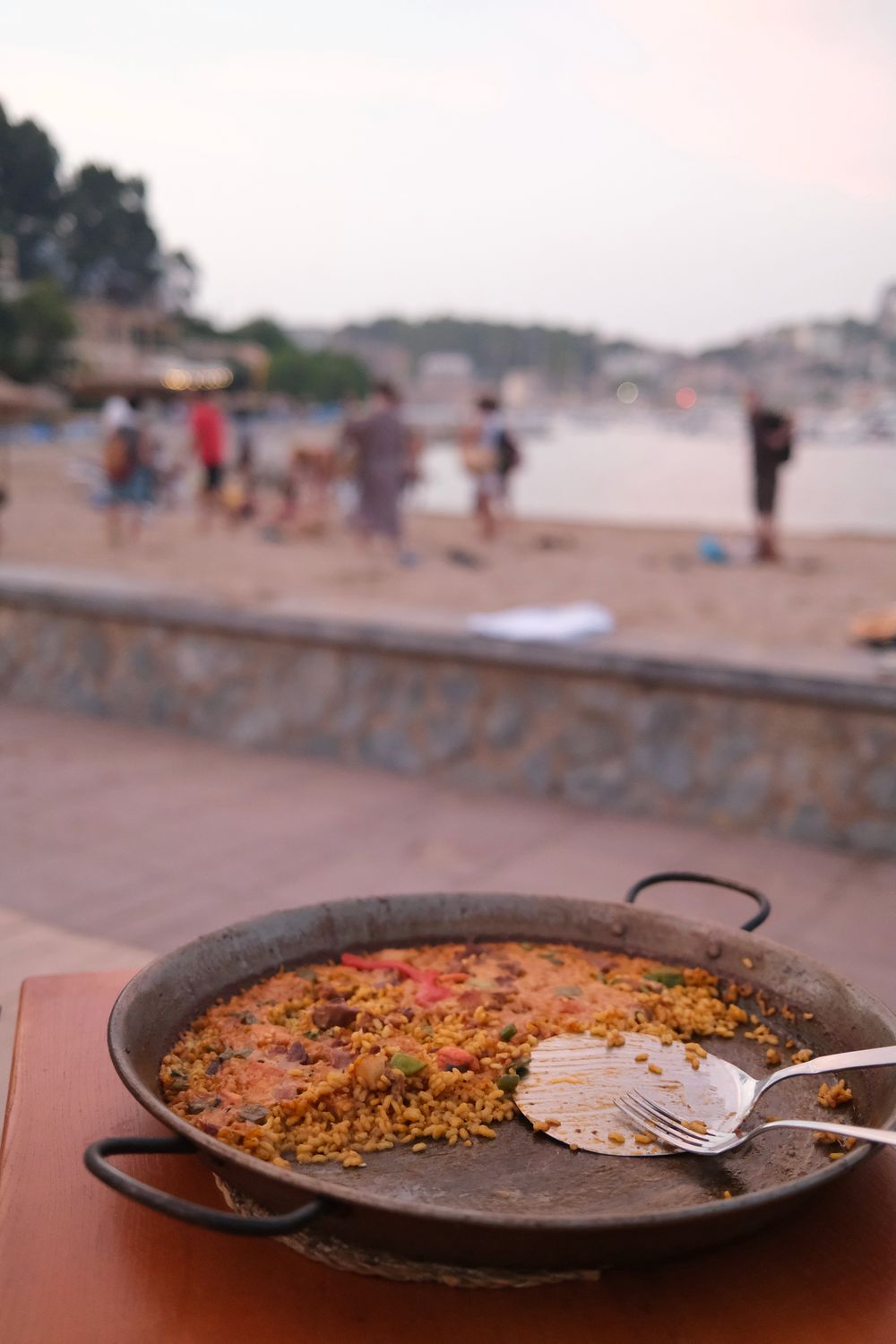
Traditional Spanish Dishes
Spanish cuisine is beloved around the world. The best and most iconic traditional Spanish dishes include:
- Paella – This saffron-infused rice dish with seafood, meat, beans, and vegetables is Spain’s national dish. Valencian paella is the original, but there are regional variations.
- Tapas – These small shareable plates like patatas bravas, spanish omelettes, and pan con tomate are essential for Spanish cuisine. Eating tapas is a favorite Spanish pastime.
- Gazpacho – The cold, raw vegetable tomato soup is especially refreshing on hot Spanish days. Originating in Andalusia.
- Pisto – A Spanish vegetable stew with tomatoes, peppers, onions, eggplant and zucchini. It’s like a ratatouille.
- Tortilla Española – The ubiquitous Spanish omelet made with eggs, potato and onion is served everywhere.
- Jamón Ibérico – This famous cured Spanish ham has a melt-in-your-mouth texture and nutty, sweet flavor.
- Fabada Asturiana – A hearty Asturian bean stew made with smoky chorizo and Morcilla (blood sausage).
- Cocido – A filling meat, chickpea, and vegetable stew that’s a beloved cold-weather dish.
- Pulpo Gallego – Galician-style octopus boiled then topped with olive oil, paprika, and salt is simple but delicious.
- Cochinillo Asado – Roast suckling pig is a specialty of Segovia. The crispy skin is the best part.
With influences from its diverse regions, Spanish cuisine offers incredible flavors. These dishes offer just a taste of Spain’s culinary treasures.
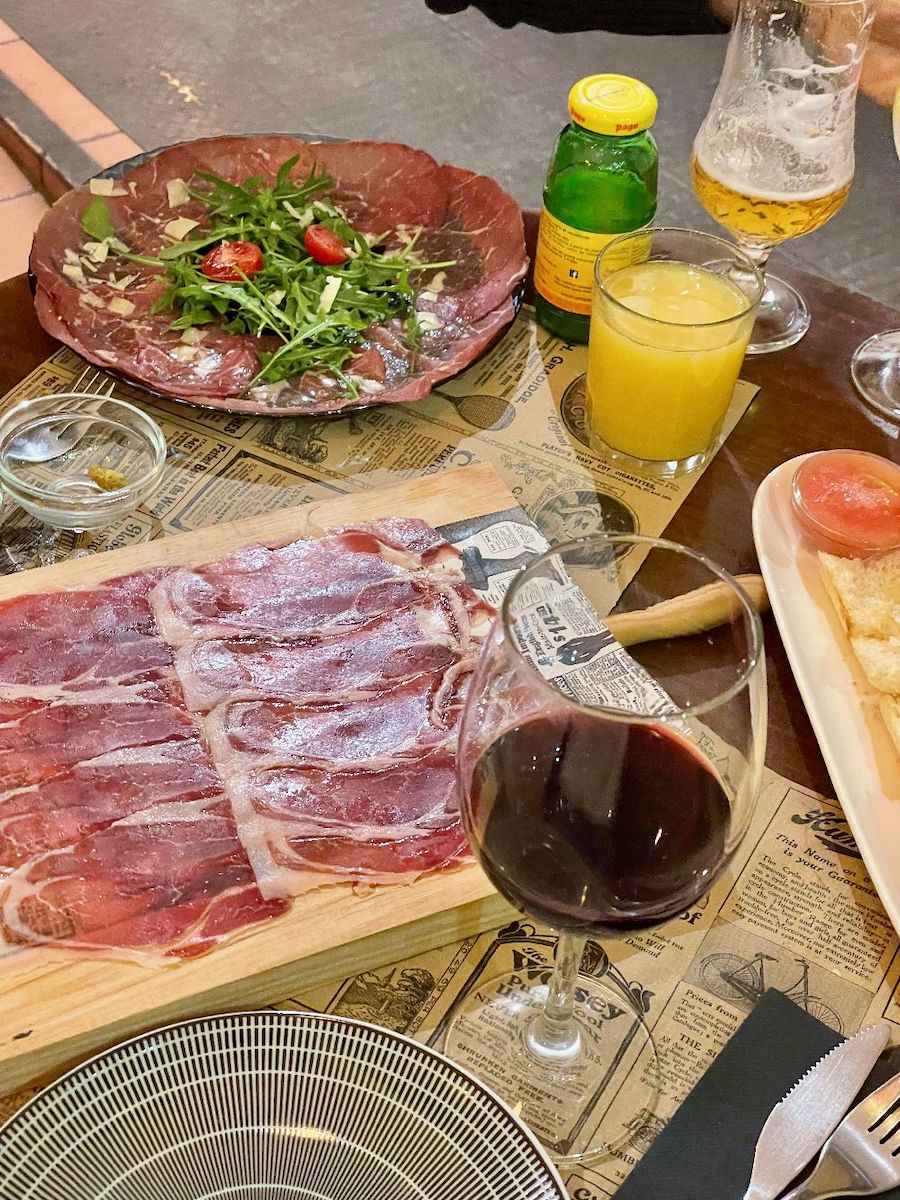
Spanish Bakeries
These are the most popular and traditional pastries and baked goods found at Spanish bakeries:
- Churros – These fried dough pastries are a beloved breakfast food. They can be eaten plain with a dusting of sugar or dipped into thick hot chocolate.
- Ensaimadas – A pastry made with a spiral of soft, sweet yeast dough with powdered sugar. Originating from Mallorca.
- Croissants – In Spain these are sometimes filled with chocolate, custard, or cream. Also popular are croissants filled with jamón serrano (cured ham) and cheese.
- Napolitannas – A puff pastry with a chocolate, custard or pastry cream filling and completed with powdered sugar.
- Magdalenas – Small, sweet muffin-like cakes made with olive oil and often topped with powdered sugar.
- Bizcochos – Sponge cakes that come in many flavors like vanilla, chocolate or lemon.
- Tartas – Sweet or savory tarts with fillings like fruit, custard, cheese or meat.
Some other popular items are cookies like polvorones, mantecados and alfajores, as well as yemas (egg yolk confections). The choices at Spanish bakeries are plentiful!
Spanish Cafés
Coffee culture is an integral part of life in Spain. Locals enjoy lingering over coffee drinks at cafés throughout the day and night. Here are some popular Spanish coffee beverages and café traditions:
The most iconic Spanish coffee drink is café solo, which is a small shot of concentrated espresso. This strong black coffee is often enjoyed first thing in the morning or after meals. Another variation is cortado – espresso with a dash of steamed milk. Spaniards also love café con leche, which is equal parts coffee and hot milk. A popular breakfast drink is café con leche y tostada – milky coffee accompanied by toasted bread.
Later in the day, cafés fill with people ordering café lattes, cappuccinos, and café bombons (espresso with sweetened condensed milk). There are also regional coffee specialties like the carajillo, which adds brandy, anise liqueur or whisky to espresso. Sweet dessert-like coffee drinks include the café del tiempo (with whipped cream) and café caleta (with condensed milk, cinnamon, and lemon peel).
Sipping coffee is a social affair in Spain. Locals spend hours chatting with friends and family at outdoor cafés. Sundays are especially busy days when people gather after Mass for coffee and churros. Coffee breaks provide a daily opportunity to take a pause, watch the world go by, and catch up with acquaintances. The café culture reflects the Spanish values of slowing down and appreciating good food and conversation!
Tips For Solo Female Travelers
Solo female travelers can find it hard to travel alone in some countries. Make sure you have enough money before you leave on your trip. Also, be aware of pickpockets and thieves who may try to take advantage of women traveling alone.
When exchanging currency, keep in mind the exchange rate used by the bank. The banks usually charge a fee for changing money into euros. At the airport, and when you get to Spain, there are exchange booths where you can exchange money without any fees.
Consider buying an international SIM card for your mobile phone. This way, you don’t need to carry cash or use up data roaming minutes. When you arrive in a new country, ask your provider about using local SIM cards. A mobile phone should always be carried with you as a solo female traveler in case of emergency.
Always let people you trust know where you are as a female solo traveler and what you plan to do while you’re away. Keep copies of important documents such as your passport, visa, flight tickets, and credit cards. Send a copy of these back home to someone you trust too so you can always have a backup option if you lose them when traveling.
I hope after reading this Spain travel guide you have a better understanding of how to plan for an incredible trip to Spain! Spain is a great place to visit if you are looking for culture, food, and history, so why not start planning your Spanish adventure now?

